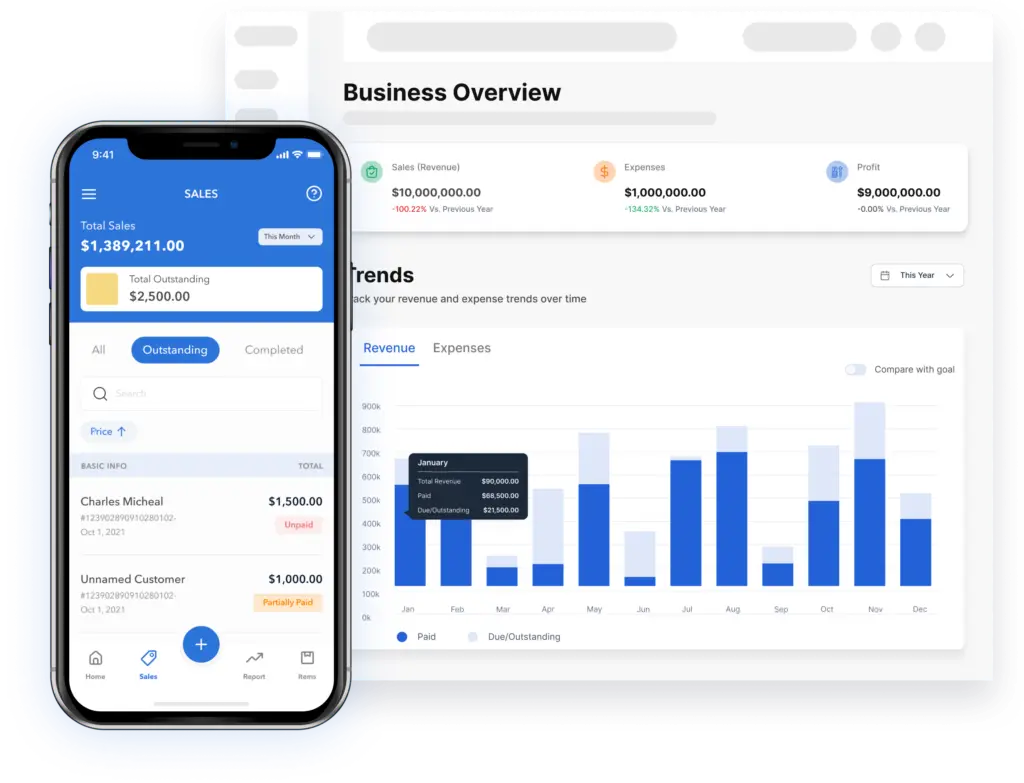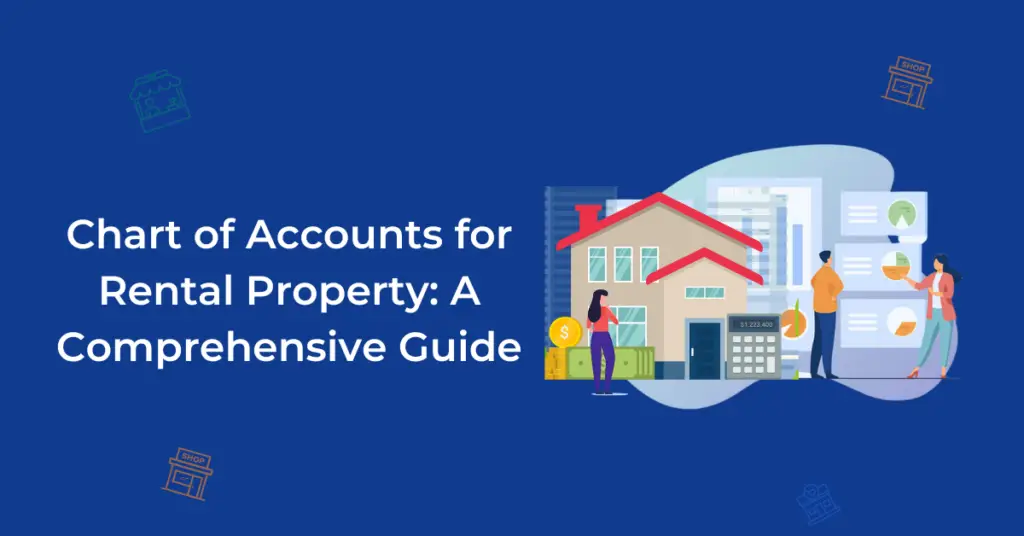Owning real estate can be a fantastic way to build wealth and secure your financial future. But with great rewards often comes great responsibility – keeping your finances organized. Here’s where a well-structured chart of accounts (CoA) for your rental property such as a hotel becomes a helpful tool.
Think of a CoA as a detailed filing cabinet for all your rental property’s financial transactions. It categorizes every penny coming in (income) and going out (expenses), ensuring a clear picture of your investment’s health.
In this guide, we’ll explore the basics of the chart of accounts for rental properties, including:
- Why is a Chart of Account Crucial for Rental Property Owners?
- Components of Chart of Accounts for Rental Properties
- Rental Property Journal Entries
- Harnessing Vencru for Chart of Accounts Optimization
Why is a Chart of Accounts Crucial for Rental Property Owners?

A chart of accounts serves as a roadmap for organizing and categorizing financial transactions related to rental properties. It provides clarity and transparency in financial reporting, enabling property managers to track income, expenses, and profitability. With a well-defined chart of accounts for hotel, landlords, and property managers:
- Save Time and Minimize Errors: A clear chart of accounts for rental property frees bookkeeping. Each transaction is categorized correctly, saving you valuable time, especially if you manage multiple properties. Plus, a well-defined CoA reduces the risk of errors in your financial records.
- Generate Accurate Reports: With a CoA, you can easily generate accurate financial reports for tax filing and personal analysis. These reports, such as your income statement (profit and loss) and balance sheet, clearly show your rental property’s financial health.
- Make Informed Decisions: Categorized data from your chart of accounts empowers you to make informed choices about your real estate property such as a hotel. You can analyze trends, identify areas to save money, optimize rent prices, and track the overall profitability of your investments.
- Make Tax Preparation Easy: A CoA takes the stress out of tax season by keeping your income and expenses neatly organized. This translates to faster and more accurate tax preparation, ensuring you comply with tax regulations, rental laws, and accounting standards to avoid penalties or legal issues.
- Optimize Budgeting and Forecasting: With clear financial data from your CoA, you can allocate resources efficiently, predict future income and expenses, and set realistic financial goals to maximize your property’s profitability and return on investment (ROI).
- Optimize Investments: Analyze property performance, evaluate rental trends, and identify areas for improvement or cost savings with data from your CoA. This empowers you to make informed decisions that optimize your investment returns.
Components of Chart of Accounts for Rental Property
A chart of accounts for real estate properties such as a hotel and Airbnb typically consists of five primary categories:
Asset Accounts
| Account Number | Account Name | Description |
|---|---|---|
| 1010 | Cash | Funds available for property maintenance, repairs, or emergency expenses. |
| 1020 | Accounts Receivable | Rental income owed by tenants or Airbnb guests. |
| 1030 | Property Investments | Cost of acquiring or renovating real estate properties. |
| 1040 | Furniture and Fixtures | Value of furnishings and equipment provided in furnished rentals. |
| 1050 | Land and Building | The market value of rental properties and land assets. |
Liability Accounts
| Account Number | Account Name | Description |
|---|---|---|
| 2010 | Accounts Payable | Outstanding bills, utilities, or maintenance expenses. |
| 2020 | Mortgages and Loans | Principal and interest payments on property loans or mortgages. |
| 2030 | Security Deposits | Refundable deposits held from tenants or guests for property security. |
| 2040 | Property Taxes | Taxes levied on rental properties by local authorities or municipalities. |
| 2050 | Insurance Payable | Premiums for property insurance coverage and liability protection. |
Equity Accounts
| Account Number | Account Name | Description |
|---|---|---|
| 3010 | Owner’s Equity | Owner’s investment in rental properties or business equity. |
| 3020 | Retained Earnings | Accumulated profits or losses from rental operations. |
| 3030 | Capital Contributions | Additional capital invested in property acquisitions or renovations. |
| 3040 | Reserve Funds | Emergency funds or reserves are set aside for property maintenance or contingencies. |
| 3050 | Partner Distributions | Distribution of profits to property co-owners or partners. |
Revenue Accounts
| Account Number | Account Name | Description |
|---|---|---|
| 4010 | Rental Income | Revenue that is generated from lease agreements, Airbnb bookings, or property rentals. |
| 4020 | Late Fees and Penalties | Additional charges for overdue rent payments or lease violations. |
| 4030 | Property Services | Income from ancillary services such as cleaning, maintenance, or parking fees. |
| 4040 | Utility Reimbursements | Reimbursements from tenants for utility expenses incurred on their behalf. |
| 4050 | Miscellaneous Income | Miscellaneous revenue sources such as lease termination fees or referral commissions. |
Expense Accounts
| Account Number | Account Name | Description |
|---|---|---|
| 5010 | Property Maintenance | Costs associated with routine maintenance, repairs, or landscaping. |
| 5020 | Property Management Fees | Fees paid to property management companies for tenant screening, leasing, or administrative services. |
| 5030 | Utilities and Services | Expenses incurred for water, electricity, gas, internet, and other utility services. |
| 5040 | Property Taxes | Taxes levied on rental properties by local authorities or municipalities. |
| 5050 | Insurance Premiums | Premiums for property insurance coverage, liability protection, or rental income loss. |
Rental Property Journal Entries
A well-structured chart of accounts (CoA) is crucial for managing your rental properties such as a hotel and Airbnb. But how do you translate those categories into actual financial records? Here’s where journal entries come in! They document financial transactions for your rental property, keeping your accounting system organized and accurate.
Let’s explore how to record journal entries with three common scenarios:
Example 1: Receiving Rent Payment
- Scenario: You receive a rent payment of $1,200 from your tenant for April.
- Journal Entry:
| Account | Debit | Credit | Description |
|---|---|---|---|
| Cash | $1,200 | To record the cash received from rent payment. | |
| Rental Income | $1,200 | To record the cash received from rent payments. |
Explanation:
- We debit the Cash account for $1,200 because cash is coming into your possession.
- We credit the Rental Income account for $1,200 to reflect the income earned from your rental property.
Example 2: Paying Mortgage Payment
- Scenario: You make a monthly mortgage payment of $800 for your rental property.
- Journal Entry:
| Account | Debit | Credit | Description |
|---|---|---|---|
| Mortgages and Loans | $800 | To record the monthly mortgage payment made. | |
| Cash | $800 | To record the cash used to pay the mortgage. |
Explanation:
- We debit the Mortgages and Loans account for $800 as this expense is specific to the mortgage loan for the property.
- We credit the Cash account for $800 to reflect cash outflow for the mortgage payment.
Example 3: Recording Maintenance Expense
- Scenario: You pay a plumber $250 to fix a leaky faucet in your Airbnb.
- Journal Entry:
| Account | Debit | Credit | Description |
|---|---|---|---|
| Property Maintenance | $250 | To record the cost of plumbing repairs. | |
| Cash | $250 | To record the cash used to pay the plumber. |
Explanation:
- We debit the Property Maintenance account for $250 because this expense is related to the upkeep of the property.
- We credit the Cash account for $250 to reflect cash outflow for the plumbing repair at your Airbnb.
Related Read: Debits and Credits in Accounting: Guide with Journal Entry Examples
Harnessing Vencru for Chart of Accounts Optimization

As a property manager or landlord, leveraging advanced accounting software like Vencru can streamline your chart of accounts management and enhance overall financial efficiency. With Vencru’s intuitive features and robust functionalities, you can:
- Customize Chart of Accounts: Tailor your CoA to suit the unique needs of your rental properties, ensuring accurate categorization of income, expenses, and assets. For example, if you operate an Airbnb, you might include an “Airbnb Fees” expense category.
- Automate Transaction Recording: Seamlessly import bank transactions, rental income, and expense data into Vencru, reducing manual data entry and human error.
- Manage Tenant Payments: Simplify rent collection and tenant payments with Vencru’s invoicing and payment processing features, ensuring timely and accurate recording of rental income.
- Track Property Maintenance: Monitor maintenance and repair expenses and track vendor payments to ensure property upkeep and tenant satisfaction.
- Generate Comprehensive Reports: Generate detailed financial reports, including income statements, balance sheets, and cash flow statements, to assess the financial health of your rental properties and make informed business decisions.
Ready to explore Vencru? Get started here or book a demo
Related Content:
- Chart of Accounts: Definition, examples, and industry-specific versions
- Guide to Retail Chart of Accounts (with sample PDF)
- Chart Of Accounts For A Construction Company: Detailed Guide
- Chart of Accounts for Nonprofit: A Comprehensive Guide
- Chart Of Accounts For E-commerce Businesses: Detailed Guide
Disclaimer: This article is for informational purposes only and does not constitute financial or legal advice. Organizations should consult qualified professionals for guidance on their specific financial management needs.








